The more you understand personalities, the easier it becomes to productively engage and manage your professional relationships. One of the most powerful elements of understanding behaviors is knowing the inherent needs and motivators for different personality types, including ourselves!
- Be proactive, not reactive.
When we react, we are communicating using our own natural personality. Being proactive requires us to know and understand where the other person is coming from and respond in a manner most likely to result in a positive outcome for both of us.
Being proactive means working to understand what an individual’s personality may be and what motivators and needs they may have that can accommodate. Sometimes it is our own personality style that triggers negative reactions from others. It is important to be aware of this and make adjustments as needed.
- Understand the needs of the different personality types on the team.
An easy example of this is extraversion verse introversion. An extraverted person will need opportunities to interact and socialize while someone with a stronger introversion will need the freedom to do ‘heads down’ work with less interaction required.
I experienced this on a recent flight from Chicago to Boston. One of my row partners was very extraverted and had a strong need to chat about a little bit of everything. I, on the other hand, tend to be a more on the introverted side and prefer to focus on work or something that doesn’t require as much ‘human interaction’. I sought to send that signal by putting earbuds in and turning on an audio book. When that didn’t work, I put on my Beats headphones. That also didn’t work. So, I turned it all off and did my best to adapt my natural personality to be a pleasant travel companion to this friendly seat partner.
There are other personality traits at play as well. Someone with high levels of dominance will need to work independently and compete while someone with low levels of dominance will need to work in a more collaborative and team-oriented environment.
Similar differences exist when looking at high and low levels of patience and formality. By understanding the needs for each personality type, we can begin to structure our work and communication style to garner the most positive and productive results.
- Motivate others based on their specific personalities.
Along with the natural behavioral needs everyone has, come a varying degree of motivating factors. If you are able to motivate an individual in a way that recharges their energy the fastest, we will all be able to be more productive and work more cohesively as a team. For example, someone with high levels of extraversion is motivated by public praise and being liked. While this may seem childish, it is actually critical to their ‘energy’ and motivation to be fully engaged. On the other hand, someone who has a stronger tendency to be introverted, prefers private praise and doesn’t rely as heavily on everyone knowing their successes. As an introvert, I respond much better to an email from the boss telling me that the work I did was incredible and to keep it up. If I’m managing personalities, I’ll understand the need to adapt these motivators to fit each individual’s personal needs.
- Finally, use the right tool to measure natural personalities/behaviors.
Be careful not to try to ‘guess’ someone’s natural makeup. This is especially critical with those you may not know as well. From my HR background, I have done a lot of interviewing, and there are people who interview really well but are poor fits for the role. There are others who interview very poorly but would be a slam dunk! The same is true in building effective teams, overcoming communication challenges and managing work performance.
Using an assessment tool in the interview process and build teams around their motivations and styles, can have an impactful difference. The tool I personally recommend and love to use for its fast, easy-to-understand results is the Predictive Index® (PI®).
PI® is a scientifically validated behavioral assessment tool that measures the core drives in an individual in under 10 minutes. The power of the report data enables you to manage the complex personality differences that you have on your team. Using this assessment will also enable you to get a more accurate behavioral ‘read’ on candidates that you are considering bringing into the team you are building with the goal of hiring right the first time.
We’re all different. Let’s take the time to learn a little more about how we can help each other be the most effective individuals and team players possible.
About the Author: Josh Combest
About MCG Partners
MCG Partners a woman-owned, Greater Boston-based consultancy specializing in executive coaching, leadership development, talent management, and organizational development solutions. We help businesses optimize success through the entire management life-cycle. MCG Partners is also a Predictive Index® (PI®) certified partner.
To learn more about MCG Partners’ services or The Predictive Index®, contact John Griffith at john.griffith@mcgpartners.com or visit mcgpartners.com.[/fusion_text][/fusion_builder_column][/fusion_builder_row][/fusion_builder_container]







